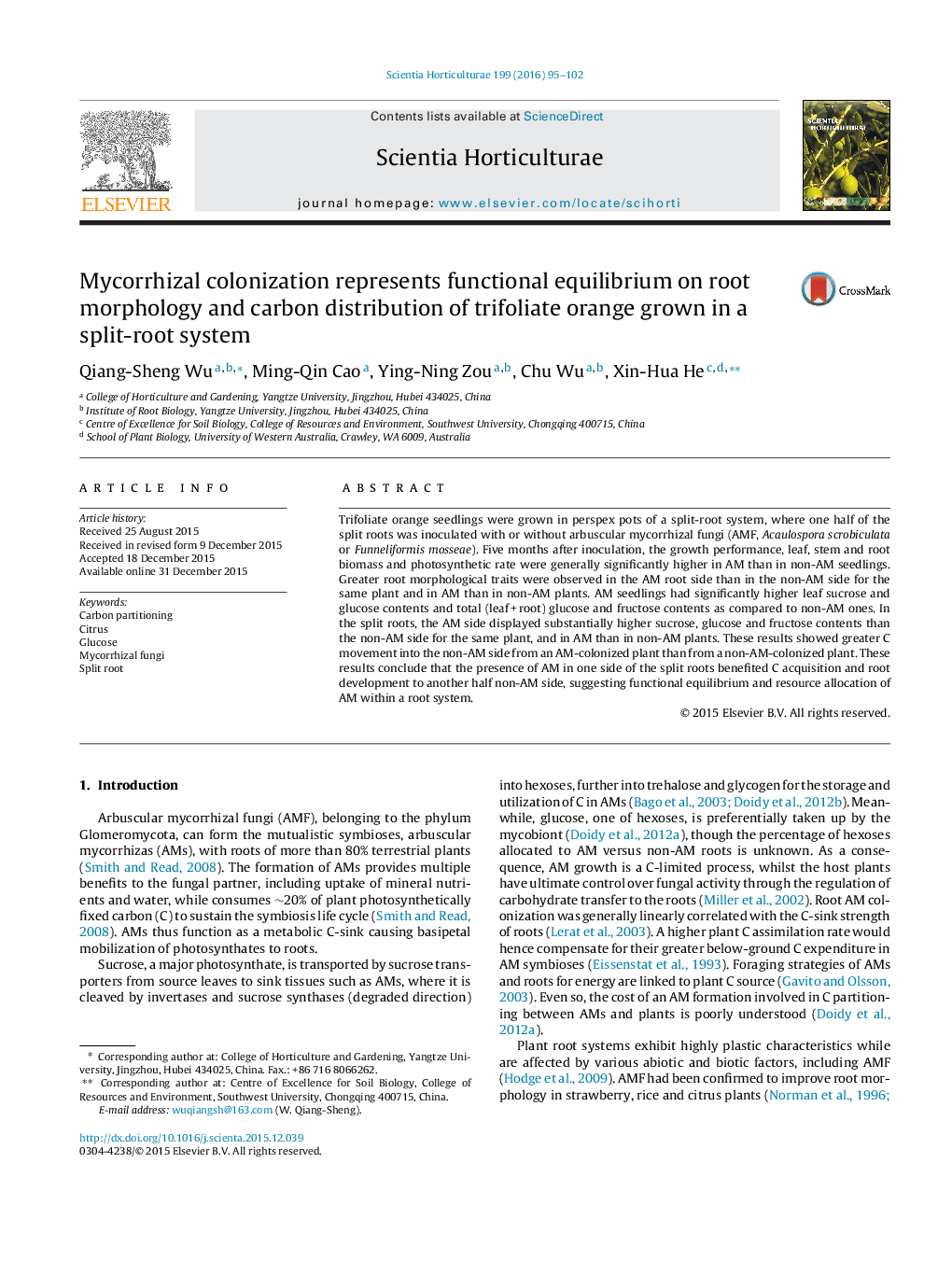| Article ID | Journal | Published Year | Pages | File Type |
|---|---|---|---|---|
| 4566119 | Scientia Horticulturae | 2016 | 8 Pages |
•A split-root system, where one half of split-root was colonized by AMF, was used.•Growth, biomass and Pn were significantly higher in AM than in non-AM split-root seedlings.•Greater root morphology and sugars were in AM than in non-AM root side in a plant.•Functional equilibrium and resource allocation were found in AM split-root system.
Trifoliate orange seedlings were grown in perspex pots of a split-root system, where one half of the split roots was inoculated with or without arbuscular mycorrhizal fungi (AMF, Acaulospora scrobiculata or Funneliformis mosseae). Five months after inoculation, the growth performance, leaf, stem and root biomass and photosynthetic rate were generally significantly higher in AM than in non-AM seedlings. Greater root morphological traits were observed in the AM root side than in the non-AM side for the same plant and in AM than in non-AM plants. AM seedlings had significantly higher leaf sucrose and glucose contents and total (leaf + root) glucose and fructose contents as compared to non-AM ones. In the split roots, the AM side displayed substantially higher sucrose, glucose and fructose contents than the non-AM side for the same plant, and in AM than in non-AM plants. These results showed greater C movement into the non-AM side from an AM-colonized plant than from a non-AM-colonized plant. These results conclude that the presence of AM in one side of the split roots benefited C acquisition and root development to another half non-AM side, suggesting functional equilibrium and resource allocation of AM within a root system.
